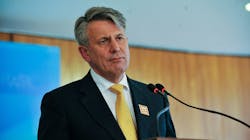Shell CEO says high energy prices, fuel rationing could last for years
Offshore staff
STAVANGER, Norway – Europe may be facing years of energy rationing and the need to find alternative supplies as its energy crisis worsens and Russia restricts natural gas flows, Shell CEO Ben van Beurden said Monday, according to the Financial Times.
The continent is facing soaring natural gas prices, dwindling stockpiles, and the looming threat of further supply cuts from Russia as Gazprom readies for a three-day maintenance closure of Nord Stream 1 this week.
Altogether, the crisis will test “solidarity” among EU member states, van Beurden said.
“It may well be that we have a number of winters where we have to somehow find solutions through efficiency savings, through rationing and a very, very quick buildout of alternatives,” he said. “That this is going to be somehow easy, or over, I think is a fantasy that we should put aside.”
European electricity prices have soared this year as energy commodities are cut off. The German baseload year-ahead power, Europe's benchmark electricity price, is more than 1,400% higher than the average price between 2010 and 2020.
Much of the continent is scrambling to stockpile natural gas supplies ahead of the winter months. Friday’s recorded prices were more than 30 times higher than benchmark prices two years ago and more than 10 times their current level in the United States.
The EU’s 27 member states agreed in late July to voluntarily cut gas consumption by 15% between August and March 2023. However, mandatory cuts could be imposed by the EU if the supply crisis worsens.
08.29.2022
